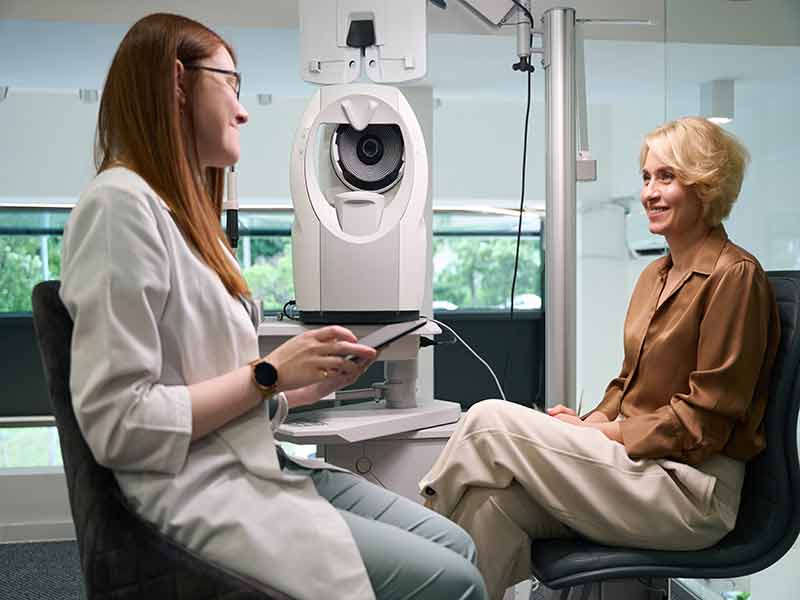Glaucoma Awareness Month is a crucial reminder of protecting vision and preventing blindness. Held annually in January, this observance shines a spotlight on a condition often called “the silent thief of sight.” Glaucoma is a leading cause of irreversible blindness, yet many people remain unaware of its symptoms and risks until it’s too late. Through education, proactive eye care, and community involvement, Glaucoma Awareness Month empowers individuals to take control of their eye health.
What is Glaucoma?
Glaucoma is a group of eye conditions that damage the optic nerve, essential for transmitting visual information to the brain. This damage is often caused by elevated intraocular pressure (IOP) but can occur even with normal eye pressure. Without early detection and treatment, glaucoma can lead to permanent vision loss, making it a significant public health concern.
Types of Glaucoma
Open-Angle Glaucoma
The most common type, open-angle glaucoma, progresses slowly and painlessly. It often goes unnoticed until significant vision loss occurs.
Angle-Closure Glaucoma
This less common form can develop suddenly and is considered a medical emergency. Symptoms include severe eye pain, nausea, and blurred vision.
Secondary Glaucoma
Caused by underlying conditions such as diabetes or trauma, secondary glaucoma underscores the importance of managing overall health to prevent complications.
The Silent Thief of Sight
Glaucoma is often called “the silent thief of sight” because it progresses without noticeable symptoms in its early stages. When individuals experience vision changes, the damage is usually advanced and irreversible. This highlights the critical need for regular eye exams, particularly for those at higher risk.
Symptoms of Glaucoma
While early stages of glaucoma may not present noticeable symptoms, advanced stages can cause:
- Loss of peripheral vision
- Tunnel vision
- Eye pain or redness
- Blurred vision
Risk Factors for Glaucoma
Understanding risk factors is vital for prevention. Key factors include:
- Age: People over 60 are at higher risk.
- Genetics: A family history of glaucoma increases susceptibility.
- Health Conditions: Diabetes, hypertension, and other chronic conditions can elevate risk.
- Ethnicity: African Americans, Asians, and Hispanics face higher incidences of certain types of glaucoma.
Who is Most at Risk?
High-risk groups include:
- Older adults
- Individuals with a family history of glaucoma
- People with chronic health conditions
These groups should prioritize regular eye exams to catch the disease early.
The Importance of Regular Eye Exams
Comprehensive eye exams are the cornerstone of glaucoma prevention. These exams measure intraocular pressure, assess the optic nerve, and evaluate visual fields. Experts recommend that individuals over 40 undergo eye exams every two years and annually after age 60.
Treatment Options for Glaucoma
Treatment depends on the type and severity of glaucoma and may include:
- Medications: Eye drops to reduce intraocular pressure.
- Laser Therapy: Procedures to improve fluid drainage.
- Surgery: Advanced cases may require surgical intervention.
Emerging therapies, such as neuroprotective treatments, offer hope for preserving vision in the future.
How to Support Glaucoma Awareness Month
Get involved by participating in:
- Educational webinars
- Community screenings
- Social media campaigns to spread awareness
Every effort contributes to a collective goal of preventing vision loss and improving lives.
FAQs About Glaucoma Awareness Month
What is Glaucoma Awareness Month?
It is an annual observance in January to promote eye health and prevent blindness caused by glaucoma.
How can glaucoma be prevented?
Regular eye exams, managing health conditions, and avoiding eye injuries can reduce risk.
Who is most at risk for glaucoma?
Older adults, those with a family history, and individuals with chronic health conditions are at higher risk.
What are the early signs of glaucoma?
Early stages often have no symptoms; however, advanced signs include peripheral vision loss and blurred vision.
How is glaucoma treated?
Treatment includes medications, laser therapy, or surgery, depending on the type and severity.
How can I support Glaucoma Awareness Month?
Participate in community events, share educational resources, and encourage regular eye exams.
Conclusion
Glaucoma Awareness Month is more than an observance; it’s a call to action to prioritize eye health and prevent blindness. By spreading awareness, encouraging early detection, and supporting innovative research, we can protect millions of people’s vision worldwide.

